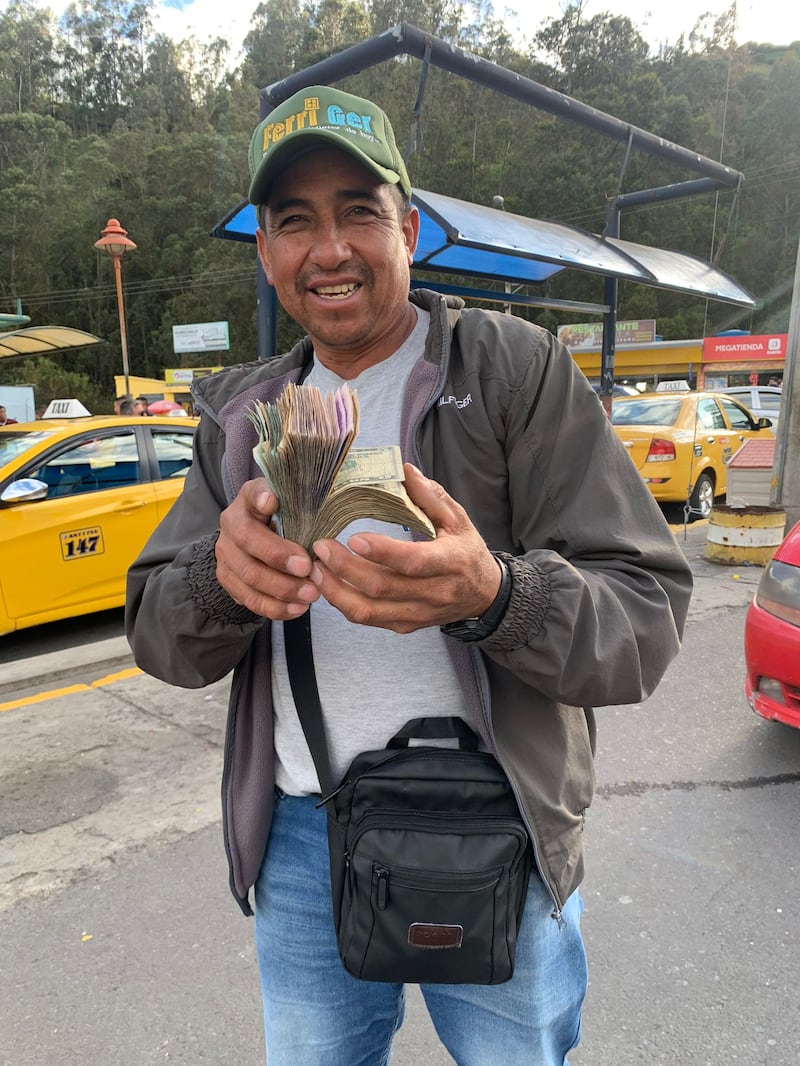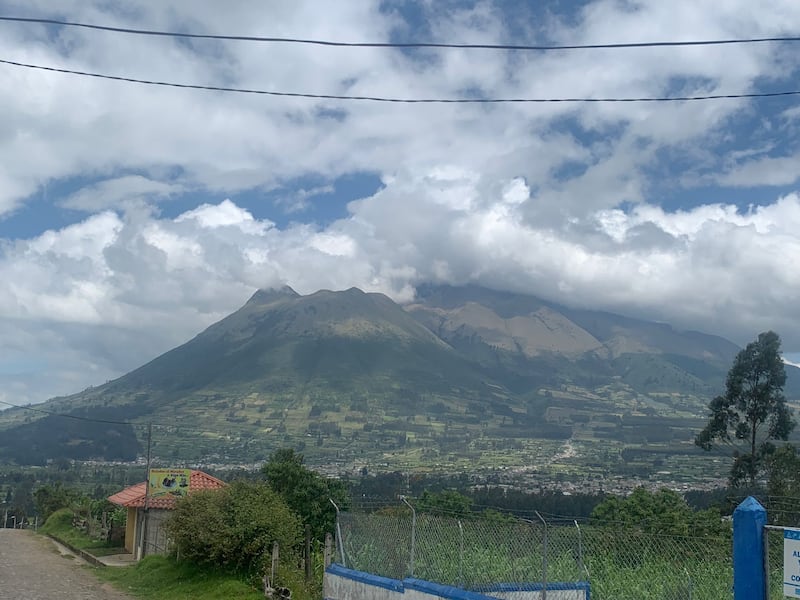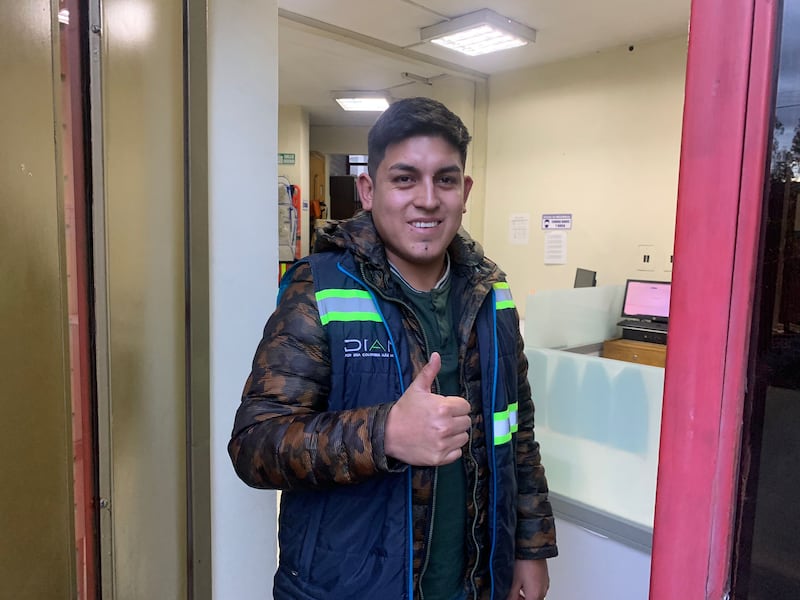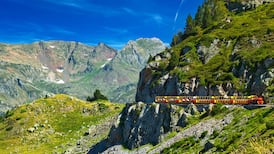“What do you think?” I asked the Ecuadoran customs officer in military-style uniform sitting under the little canopy by the roadside. “He gave me 86,000 Colombian pesos for $20. Is that good?”
The customs guy took out his calculator and after some tap-tap-tapping told me, “Si, es bueno.” And so I went back to the dealer on the other side of the road and got some more, managing to up the rate to 90,000 pesos per $20.
Border crossings can be strange places at the best of times. Buying currency from blokes waving fistfuls of cash at you always has a furtive aspect. Being aided in getting the best rate by a customs agent is, well, definitely on the weird side.
The Ecuador-Colombia frontier crossing just beyond Tulcán appears quite suddenly. I left Quito and crossed the equator at Mitad del Mundo, straddling its yellow line so one foot was in the northern hemisphere while the other was in the southern, as everyone does who passes this way. I also left behind the dream of at least seeing Chimborazo and Cotopaxi, those two volcanoes of childhood poetic memory. WJ Turner’s poem Romance has occupied several of my brain cells for well over 50 years: “When I was but thirteen or so / I went into a golden land, / Chimborazo, Cotopaxi / Took me by the hand...”

I had given up the notion of climbing Chimborazo. At 6,314m above sea level, and festooned with glaciers, it is the highest mountain in South America. Standing on the summit, one is closer to the sun than at any other point on Earth, even the top of Mount Everest. How come? Because Earth is not a perfect sphere. Chimborazo and Cotopaxi, which are close to Quito, were smothered in low cloud and drizzle as I passed. By the time I got to Otavalo, north of Quito, the volcanic Imbabura mountain – 4,609m – was almost wholly visible. The cone of a lesser volcano on its side had collapsed, and the castellated ridge of what remained stood out, black against the sky.
And then the frontier. You round a bend as the road swings down into a valley, and suddenly it’s there. On the right, a car park filled with yellow taxis and those currency traders. On the left, a cluster of buildings housing the Ecuadoran immigration police and the aduana, the customs. Ahead, a short bridge crossing the valley and a huge blue sign over the road – thank you for visiting the Republic of Ecuador, it says in Spanish – and, as the road rises out of the valley, another huge green sign over the road: Welcome to the Republic of Colombia. My friendly customs exchange-rate adviser shows me where to go, and I sail through the Ecuadoran side without a hitch – while also picking up some useful advice from two Brazilian fellows heading in the opposite direction to me. They have up-to-date intel about the mud slides and road blockages in southern Colombia and suggest alternative routes on the way to Bogotá.

On the Colombian side I am immediately lit upon by several men of indeterminate status: park here, go there, no, not there, here, go that way, then there, that window. I have no idea who they are. They look far from official, and I see no reason to trust them. But eventually I get my passport stamped for entry and then go to the Colombian customs window – blacked out and with a tiny sliding window, covered by a metal grille, at the bottom of it. The grille swishes open, and I hand in my passport and driving licence, plus the motorbike’s Irish registration document, as I have done at every other border crossing. This time there comes back a request for the other form I’m supposed to have filled in – which turns out to be the main one.
I am told this can only be done online and am pointed to a poster telling me what to do – online. Do you have wifi, I ask. No, they don’t have wifi. How can I fill in the form, then? You must do it online. Swish!
And so it goes on like this for maybe 10 minutes. I am close to tears in frustration. To cap it all, I am now in no man’s land: I have left Ecuador and have technically entered Colombia, as my passport proves, but my bike has not, or at least not legally. And it’s approaching 6pm and getting dark rapidly, as it does around the equator.
Eventually, a young customs official, Javier, comes to my rescue. He leads me from the swishing window around the back and inside the building to a small room with a desktop computer. We have somehow to log on and fill in the form and then access my email, because that is how the customs system will communicate with me, approving the bike’s temporary entry to Colombia and, crucially, giving me the necessary excise-waiver documentation so it can leave again. But nothing’s working: we can’t log on, either as him or as me, until Javier uses a different logon identity – have no idea whose. Between us we fill in the form: chassis number, engine number, registration, year of manufacture. After several attempts, Javier links his phone to mine and we access my email and – oplà! – it is done.

Soon my phone is pinging with emails giving me the necessary documents. As I leave, Javier hands me a hard copy of the most important paper, the one with the number, the one relating to the bike’s approval to enter Colombia and, I assume, in a week or two, to leave.
I ride on, the darkness enveloping everything, and I notice a worrying lack of hostels or other places to stay, so I have to continue moving along the road until I stumble upon one. That happens on the far side of a place named Ipiales, where a hotel has safe parking, wifi and a double bedroom with en suite, for 40,000 pesos. That’s about €10 at the customs-official-approved rate. It’ll do just grand.
Peter Murtagh is travelling by motorbike from Tierra del Fuego, at the tip of South America, to Alaska, at the top of North America, and writing here regularly. You can also read his blog and follow him on Twitter, Facebook and Instagram











